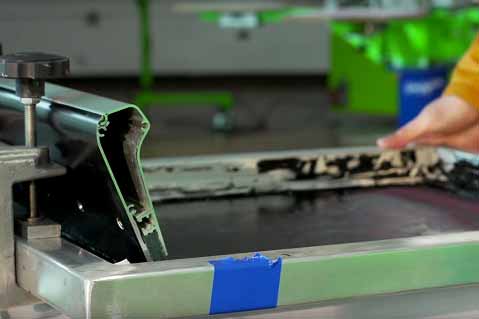Strategy December 30, 2016
How Can I Improve My Graphics?
Learn what you need to achieve good screen-print art.
Artwork plays a big part in the success or failure of a screen-printed design, but obtaining good art from your client from the get-go can be tricky business. There’s a lot of misinformation about what good artwork “must” be and what it should “never” be. For newer screen printers, figuring out what artwork you need to print a good product and conveying those requirements to your customers can be difficult.

The first step to obtaining good art is figuring out what that phrase means. What’s “good” artwork? Is it the same for every print job? For every printer? The next step is to determine what artwork is most usable and works best in your shop environment. Test things out. Try different programs, styles of artwork and inks to see which ones best suit your shop’s needs. Once you’ve determined what artwork styles best suit the way your shop works and the way you print best, decide how to convey that information to your customers. For example, post artwork guidelines on your website and in your shop; review those with each customer in detail. Good, usable artwork always starts with an educated customer.
Takeaway Tips
1. Vector artwork isn’t necessarily always required to get a good print. Of course, vector artwork often results in the best quality screen print. However, high-resolution jpegs, pdfs or other files can also work well, and might be more accessible to your clients.
2. Many customers don’t (or don’t want to) create their own art. Coming up with a logo or T-shirt design is often either beyond a client’s skill set or, frankly, not something they want to spend their time doing. In addition, while a client may bring you good-quality vector art, you might need to do extra work to convert it for screen printing. Clearly communicate this process to clients so they understand why there may be additional art-related charges for the “good” vector art they provided.
3. Work with (or hire) a graphic designer who knows how to design for screen printing, and understands the process’s limitations and strengths. This is an area where you can be proactive and have your in-house art department work on the client’s logo or design for an additional charge, or make speedy referrals to graphic designers you trust.
4. Finally, let’s bust the myth that there’s a “right” and “wrong” graphic design software package for screen-printing art. Whether you choose an Adobe or Corel program (or something else entirely), the “right” graphics package should fit your shop’s budget and be easy for your staff to use; it should also offer simple upgrades. While the Adobe vs. Corel debate has been raging for years in industry circles, the truth is that the best software is the one that serves each individual shop best. To make the right decision for your business, visit an industry trade show and talk to software vendors and demo the software for yourself.
Watch This!
Catspit Productions demonstrates on Adobe Illustrator how to make very basic spot color art for printing on a manual one-color, one-station press. Watch the video:
